Violent Crime has Increased, not Fallen
Politicians and media are pushing a false narrative
(Note: Substack has warned this column may be too long for some email programs and recipients may have to continue reading the column on the website. Merely click on the provided link.)
The Claim. There is no shortage of national politicians and media outlets claiming crime is falling. Overall, most crime has been on a steady decline since about 1990, which is great news. But what about recent years?
In May 2024, President Joe Biden said, “It’s no accident that violent crime is near a record 50-year low — a 50-year low.”
Like Biden, those claiming record-low criminal acts point to the FBI to buttress their statements. Politicians began making the falling crime claim after the FBI released its annual crime report for 2021. After crime spiked the previous years there was a dramatic fall, the FBI insisted in its 2021 report. Yet, polling indicates the public believes crime is rising, not falling. Who is correct? The politicians or the public?
The Facts. Let’s get the headline out of the way. Violent crime is not at a 50-year low. In fact, all violent crime was nearly 10% higher in 2023 than it was ten years earlier in 2014, according to the FBI’s own data (Table 1).
Between 2014 and 2023, violent crime rose in nearly every category. Aggravated assault was up almost 18%, homicides increased nearly 42% and rape skyrocketed more than 83%. Robbery fell by about one-third (Table 2).
The FBI ignored its own data when falsely claiming violent crime was falling. In an October 16, 2023 press release the FBI stated “The FBI’s crime statistics estimates for 2022 show that national violent crime decreased an estimated 1.7% in 2022 compared to 2021 estimates [emphasis added].” However, as Table 1 illustrates, violent crime in the US rose sharply by 33% in 2022 over the 2021 crime numbers.
Apparently, the FBI correctly anticipated the media would not scrutinize its data, but instead rely on the agency’s press statements. We ignored the FBI’s press statements and actually examined its data.
In contrast to violent crimes, property crimes were down overall about one-quarter during the same ten-year period (2014-2023). Arson fell by 21%, burglary was lower by more than half, and larceny had fallen by nearly 25%. However, motor vehicle thefts increased by 53% (Table 3).
Biden and others who have claimed 50-year lows in crime have been supported by organizations purporting to fact-check their statements. Fact-checks by Poynter Institute, PolitiFact and Snopes have echoed the untrue claims of a 50-year crime low. (I previously addressed how organizations like PolitiFact fabricate ‘data’ to present misleading fact-checks.).
It’s important to note that while violent crime has indeed risen, the crime rate – the numbers of crimes committed per 100,000 people – appears to be down as the nation’s population is quickly outpacing crime increases. In 2022, the violent crime rate was 377.9 crimes per 100,000, which is lower than the 1971 violent crime rate of 396.
However, it is of little consolation to the victim of a vicious criminal assault to be told they were lucky because the chances of having been attacked had fallen slightly the last couple of years. This is of no comfort to them. They are still the victim of aggravated assault.
Let’s start at the beginning with the false claims: the FBI’s 2021 annual crime report. It was compiled using sketchy data.
National Incident-Based Reporting System. After nearly a century, the FBI switched to a new crime reporting process for 2021. The National Incident-Based Reporting System (NIBRS) is the system the agency began relying on to report 2021 crime numbers. To get a better understanding of NIBRS we spoke with several law enforcement agencies around the nation.
Local law enforcement officials told us there are several upsides to the new system. Actually, NIBRS is not a new system. It has been in place for several years, but it was being used sparingly.
The data entered into NIBRS includes a greater abundance of details than the previous system, known as the summary reporting system (SRS). Under SRS, the hierarchy rule was in effect: only the most serious crime from a criminal incident was reported. For example, three crimes may have been committed during a single incident but only one crime was reported. With NIBRS all crimes committed during a criminal incident are reported.
NIBRS collects data on 62 offenses versus just 30 under SRS. There is greater specificity in NIBRS among the crime categories. Under the category of assault there are aggravated assault, simple assault and intimidation. Larceny is broken down into 8 different offenses such as pocket-picking, shoplifting, and theft from a building. It’s commonsense that greater detail has potential benefits for developing effective crime deterrence policies.
There are also 57 data elements included in NIBRS reporting such as the time of day a crime is committed, and the relationship between perpetrator and victim. Was the offense only attempted or completed? Were drugs or alcohol involved? Was the crime part of gang activity? This increased level of detail could aid local law enforcement agencies in better deploying resources to deter crime. At the state and federal level, better and more detailed data can help in developing statewide and national crime prevention policies.
It was the goal of the FBI to transition all 19,311 state, county, city, university, college, and tribal law enforcement agencies away from the summary reporting system that had been in place for nearly a century to NIBRS. But it has been slow-going for local agencies to transition. There are many reasons for the foot-dragging ranging from plain-old inertia to challenges integrating NIBRS into an agency’s records management system (RMS). An RMS is the record-keeping system of records, documents and files for use in law enforcement operations.
Michelle Mason, a senior administrator in the Chesterfield County Sheriff’s Office in central Virginia called NIBRS “a huge paradigm shift.” Her agency’s adoption of NIBRS aided in the transition from handwritten reports to a fully automated system that can aid officers in near real-time, she told us.
Loudon County, Virginia in the greater Washington, DC suburbs has the second lowest crime rate of all jurisdictions in Maryland and Virginia. Major Craig Schleiden in the county sheriff’s office credited NIBRS as one of the major technologies the department utilizes to develop successful crime deterrence strategies.
Speaking on background, the NIBRS program coordinator for a large law enforcement agency in California told us the increased details regarding perpetrator-victim relationships have helped the agency to reduce certain criminal acts.
For some agencies, there is incompatibility between NIBRS and their RMS. The two systems may not communicate with one another. To overcome this obstacle would require revamping or even replacing the current RMS and transferring all the data to a new RMS. Some local law enforcement agencies would not (or didn’t have the funds to) make the investment in a new RMS and data transfer.
Next, operators would need to be trained on how to use NIBRS and to input data. Virginia was one state that made the commitment early-on and transitioned state and local agencies to NIBRS about two decades ago. Other states, such as California, made little effort to fully transition.
Once it’s in place, NIBRS only works at the national level if the data is correct. The many uniformed and civilian law enforcement officials we spoke with were disappointed the FBI is promulgating an incomplete picture, and in some cases, a false representation of the national crime status.
Law Enforcement Participation. The FBI’s 2021 annual crime report was the first to rely exclusively on NIBRS data. About 12,000 of the nation’s 19,000 agencies reported little or no crime stats. The nation’s two largest police departments -- New York City and Los Angeles -- did not participate. Neither did Miami, San Francisco, Oakland or New Orleans. Chicago reported for just half the year. Phoenix only one month.
The FBIs 2023 crime report was just released and there is some increased participation by local jurisdictions. Of those eight major cities, only New York, Miami and Chicago participated. Many of the nation’s largest law enforcement agencies are still not sharing their crime totals. Only 73% of all law enforcement agencies submitted NIBRS data for 2023. Nearly 5300 agencies did not. Among major cities that did not submit NIBRS data were Los Angeles, San Francisco, San Jose, Oakland, Phoenix, Pittsburgh, Nashville, and Jacksonville, just to name a few.
San Francisco announced it will not use NIBRS until at least the year 2025. According to the San Francisco Police Department statistics, crime in that city did not fall dramatically in 2021, as the FBI falsely claimed happened nationally. Most violent crime was at similar levels to 2020 except for homicides, which experienced a nearly 17% increase in 2021 over the previous year.
According to FBI data, just 7,273 law enforcement agencies reported all their crime numbers for 2021. Partial crime statistics were submitted by 3,372 agencies. In some cases, it was as little as a single month’s worth of crime stats. The remaining 8,666 departments did not participate. The FBI’s 2021 annual crime report is based on the complete participation of less than 38% of the nation’s law enforcement agencies (Table 4). The FBI admitted its 2021 report was “based solely on data submitted by state and local law enforcement agencies to NIBRS.”
Misleading. Under the previous reporting system (SRS), the FBI confirmed there was a national spike in violent crime for 2020. The very next year, the FBI switched reporting systems but did not draw any connections between what it claimed was a dramatic fall in crime numbers, and the 62% of missing or incomplete crime data.
Despite lacking a majority of national statistics, the FBI insists crime is falling. And get this. The FBI hasn’t notified Congress it’s using dodgy data in compiling its national crime report.
We contacted the FBI with several questions regarding its unsupported claims, and mismatches between data submitted by local law enforcement agencies and what the FBI was reporting. An agency spokesman sent the following email reply:
“The accuracy of the statistics released by the FBI’s UCR [Uniform Crime Reporting] Program is based on data contributors’ adherence to national standards. The FBI’s UCR Program works closely with states to ensure agencies submit data to the FBI in strict compliance with FBI’s UCR guidelines. It is the responsibility of each state UCR program or contributing law enforcement agency to submit accurate statistics and correct existing data that are in error.
“Non-federal law enforcement agencies voluntarily report their data to the FBI’s UCR Program. That data are included in the FBI’s publications if it is received by the FBI’s publication deadlines and meets the publication criteria.”
We spoke with Congressman August Pfluger (R-TX-11) about this. Pfluger chairs the House Homeland Security Subcommittee on Counterterrorism, Law Enforcement and Intelligence. He is one of the key House officials who should have been informed the FBI statistics were unreliable. He wasn’t aware of the FBI’s crime numbers shortfall until we presented his office with the data. “We haven't had any sort of testimony that reflects that,” he told us.
Scrutiny. To get a firm handle on whether crime is actually rising or falling we checked other data sources. They are at odds with FBI claims. For example, the National Insurance Crime Bureau says motor vehicle thefts are at levels not seen in decades. Two-thirds of retailers report more violence and aggression in organized retail crimes, according to the National Retail Federation. Using a 38-city sample, the Council on Criminal Justice noted a rise in aggravated assault last year.
Nationally, the nearly 30% increase in murders between 2019 and 2020 was the largest ever recorded. In its crime database, the FBI claims there were 23,034 murders in 2020 and 19,563 in 2021. However, the Centers for Disease Control, which tracks all deaths in America reports the correct tallies were 24,576 and 26,031 homicides those same years (Table 5). The FBI underreported murder totals those two years by nearly 19%.
Since 2021, murders have slowly come down. The CDC reported there were 24,849 in 2022. Still, homicide is at high levels compared to the years leading to the Covid-19 pandemic. We obtained unreleased CDC data that reports 20,237 murders committed in 2023, slightly lower than the FBI total of 20,703. The FBI homicide total for 2023 (20,703) is 17.5% higher than in 2018 when there were 17,618 homicides (Table 5).
Reports of a drop in shoplifting conveniently omit the fact sharp declines began in early 2020 as countless retailers closed (voluntarily and by government edict) over the Covid-19 pandemic. The public resorted to online and home-delivery purchases. Such transactions eliminate shoplifting as a problem.
The National Retail Federation reports retailers lost more than $112 billion in merchandise due to shoplifting in 2022. State and local officials’ devil-may-care attitude toward theft have apparently led some large retailers to discourage or even ban workers from identifying, stopping or reporting theft. Lowe’s sacked a 68-year old woman for confronting a group of shoplifters. Lululemon has stated it will fire employees who report theft. Social media is filled with examples of Target employees watching brazen theft of its merchandise. Target’s CEO termed shoplifting a “worsening trend.” Home Depot executives called it a daily “battle” to stop shoplifting.
What about New York and LA that didn’t report their crime data to the FBI for 2021? Did those two cities experience the dramatic drop in crime the FBI claims occurred?
In December 2023, California Gavin Newsom announced, “We’re near 50-year lows, down 55 percent of violent crimes in the state of California from the 1990s.”
Newsom’s claim about the Golden State could not be further from the truth. According to California Department of Justice statistics, when Gavin was making his false claim violent crime totals, his state actually reached a 10-year high have risen 32% since 2014. Murder was up nearly 12%.
In New York City during the same 10-year period, murder increased 17%, rape was up 6% and felony assault spiked 37%. All major felony offenses in New York City are one-third higher (32%) in 2023 than they were a decade earlier.
None of the dozen law enforcement officials we spoke with from around the country for this investigation have witnessed the dramatic 50-year lows the FBI claims.
There’s more evidence indicating the FBI’s record low crime rate claim doesn’t square with reality. The Justice Department’s recent National Crime Victimization Survey claims the number of violent crime victims began rising in 2021. DOJ also reports the percentage of victims filing police reports is simultaneously falling. Less than 40% of all violent crime victims filed police reports in 2023. Seven in 10 victims of all property crimes including burglary and motor vehicle theft did not notify the police of their losses. The Justice Department found more than 1 in 4 victims of violent crimes did not contact police believing law enforcement “would not do anything to help.” More crime victims, fewer police notifications. These are very disturbing trends.
The Public. There may be several reasons why the public believes law enforcement will not take proper action regarding property crimes. This explains why so many crimes are not being reported to law enforcement.
High profile violent crime sprees such as the Antifa and Black Lives Matter riots in Portland (Oregon), Seattle and Minneapolis in 2020 were covered extensively in the news. Nationally, George Floyd-themed riots caused an estimated $2 billion in damages in May-June 2020. Local prosecutors dropped charges against hundreds of rioters who looted stores and torched entire neighborhoods. Few rioters were held accountable. This has likely added to the public sense of helplessness.
Minnesota was ground zero of the George Floyd-themed riots. According to a bipartisan Minnesota senate investigation, Minnesota Governor Tim Walz took no action when local leaders were pleading for him to mobilize the National Guard in the early hours of BLM rioting. Walz did not fully mobilize the Minnesota National Guard until three days into the rioting and destruction.
Prominent politicians, including presidential candidate Kamala Harris, promoted a bail fund for Minneapolis rioters. Bail recipients included those who committed murder, rape and arson. The May-June 2020 BLM-inspired rioting caused more than $500 million worth of damage in Minnesota’s twin cities.
Public Officials. Progressive states and cities have deemphasized the seriousness of theft crimes. They have accomplished this by increasing the threshold for which perpetrators may be charged with felonies.
In accordance with California’s Proposition 47, stealing merchandise totaling under $950 is classified a misdemeanor. According to the California courts, “No person charged with shoplifting may also be charged with burglary or theft of the same property.” Theft crimes are still happening – and appear to have increased – but they aren’t being reported because local officials take little or no action. This also means these criminal acts never make it into the FBI’s national crime totals.
Retailers in crime hot spots such as New York City have been forced to hire more staff, limit the number of patrons in a store, or place merchandise behind locked plexiglass cabinets.
Media darlings like Representative Alexandria Ocasio-Cortez (D-NY-14) characterize shoplifters as victims rather than as perpetrators.
Countless federal and state officials calling to ‘defund the police’ or completely dismantle entire police departments likely creates panic among millions of citizens. Several progressive cities with crime spiraling upward such as New York, Los Angeles, San Francisco, Seattle, Minneapolis, Austin, and Portland (Oregon) slashed police funding in 2020-2022. Next year, due to budget cuts the NYPD will have the fewest number of officers in uniform in three decades. Some defund advocates later reversed course when crime spiked in their communities, or as in the case of Portland Mayor Ted Wheeler, protesters rioted in front of his residence.
Summary. Politicians and national media have been beating the drum for the past two years claiming violent crime is at a 50-year low. We’ve exposed that lie for what it is. The FBI’s own data confirms violent crime is much higher in 2023 than it was just 10 years earlier. Contemporaneous information from multiple sources, as well as the FBI’s own database, reveals the US is in the midst of a significantly worse crime situation than the FBI is acknowledging.
Analysis. The FBI making press statements about declining crime while its own data indicates rising crime is indeed a head-scratcher.
Perhaps no one should be shocked. The FBI’s recent track record in behaving dishonestly, unethically and, in some cases, illegally underscores the agency has become a very political organization continually misleading the public. Consider these recent examples.
The FBI doctored evidence in “Crossfire Hurricane,” an investigation it has since be learned should not have been launched, due to a lack of evidence. It misled Congress on the reliability of the Steele dossier. It misrepresented details presented to the FISA Court. Charlies McGonigal, the FBI special agent whose office led the alleged Trump-Russia collusion investigation was sentenced for colluding with a Russian oligarch.
The agency targeted American Catholics as potential domestic terrorists. At the direction of Attorney-General Merrick Garland, the FBI sicced agents on parents attending local community school board meetings. And the FBI covered-up an investigation into the Biden family’s foreign business dealings, and withheld critical documents from Congressional oversight.
And this is just from recent years. I previously documented the case from more than 20 years ago when the FBI falsely accused an innocent man of perpetrating the 2001 anthrax attacks. The FBI named Steve Hatfill as the chief suspect and tormented him for two years despite finding no motive, lacking any evidence, and facing an airtight alibi. This FBI debacle cost US taxpayers nearly $5 million in a settlement.
The FBI’s motives may not be readily apparent, but it’s reasonable to speculate the agency is once again interfering in a presidential election by falsely claiming crime had fallen dramatically after Donald Trump left office. The opposite appears true. Contemporaneous information suggests crime has not fallen but has instead risen to record levels not seen in decades.
This investigation is more than just the exposing the FBI misleading the public. It’s uncovering the truth. Next, Congress should hold hearings and direct the FBI to explain why it is misleading the public.
Mark Hyman is an Emmy award-winning investigative journalist. Follow him on Twitter, Gettr, Parler, and Mastodon.world at @markhyman, and on Truth Social at @markhyman81.
His books Washington Babylon: From George Washington to Donald Trump, Scandals That Rocked the Nation and Pardongate: How Bill and Hillary Clinton and their Brothers Profited from Pardons are on sale now (here and here).




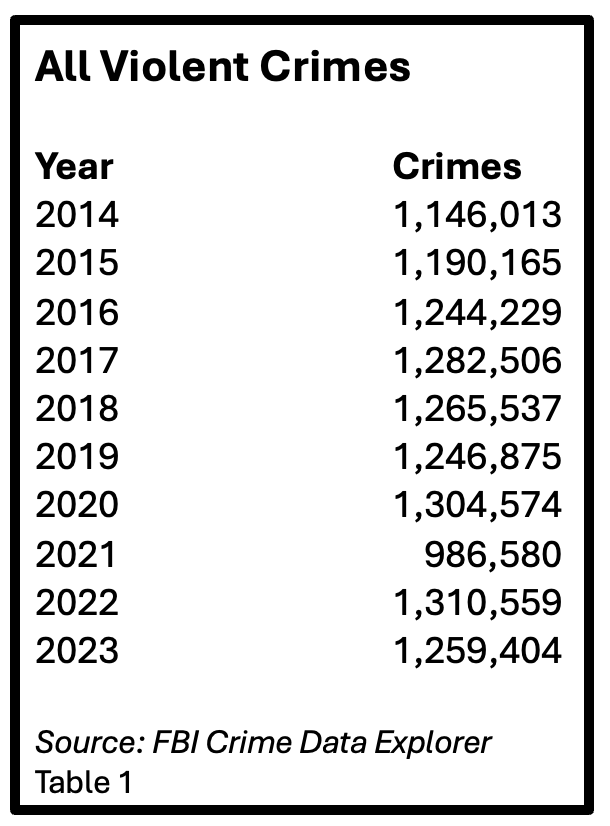
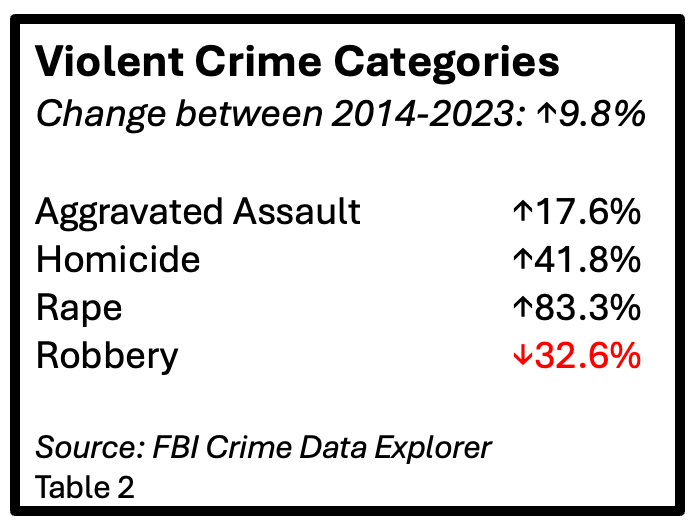
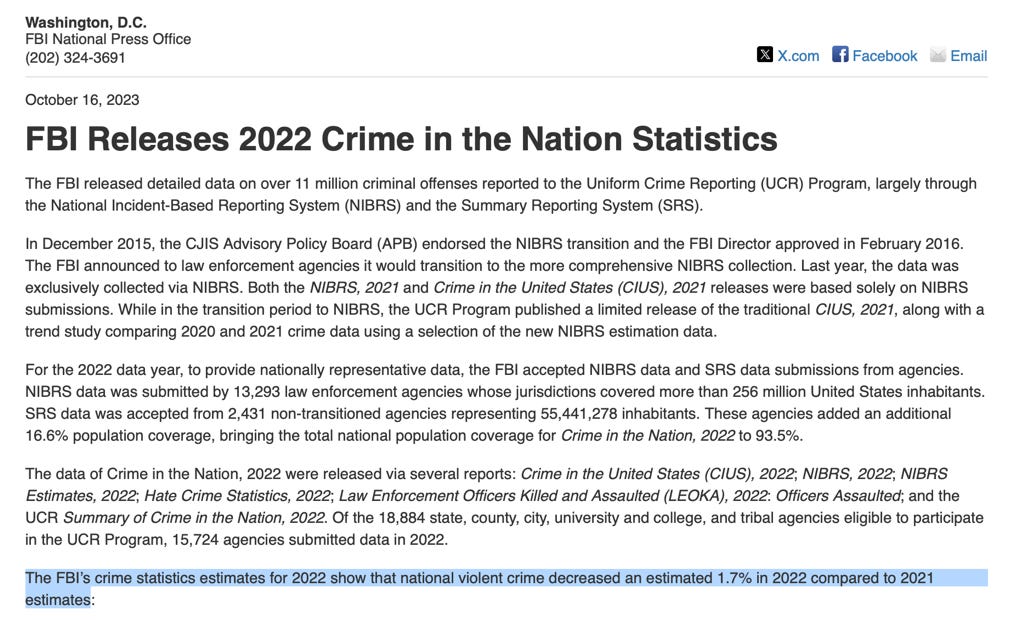
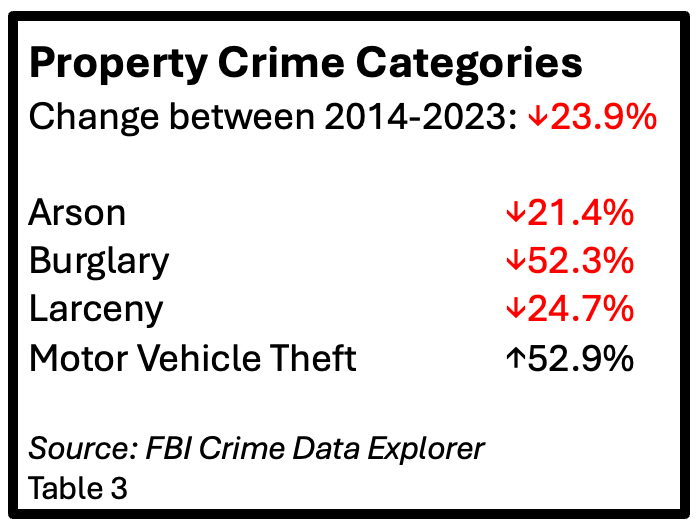
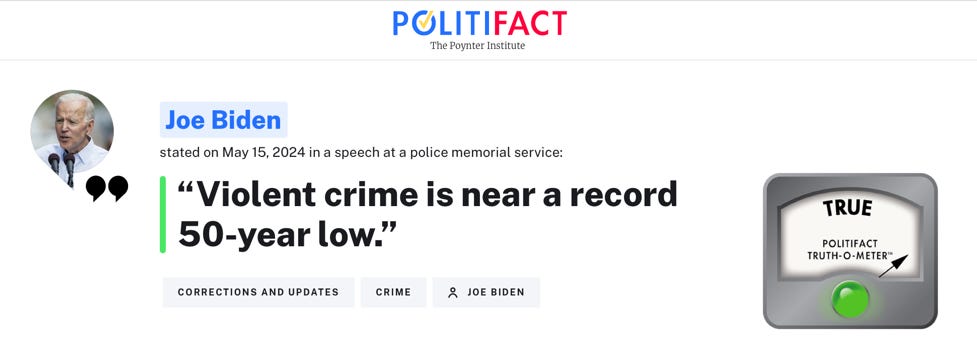
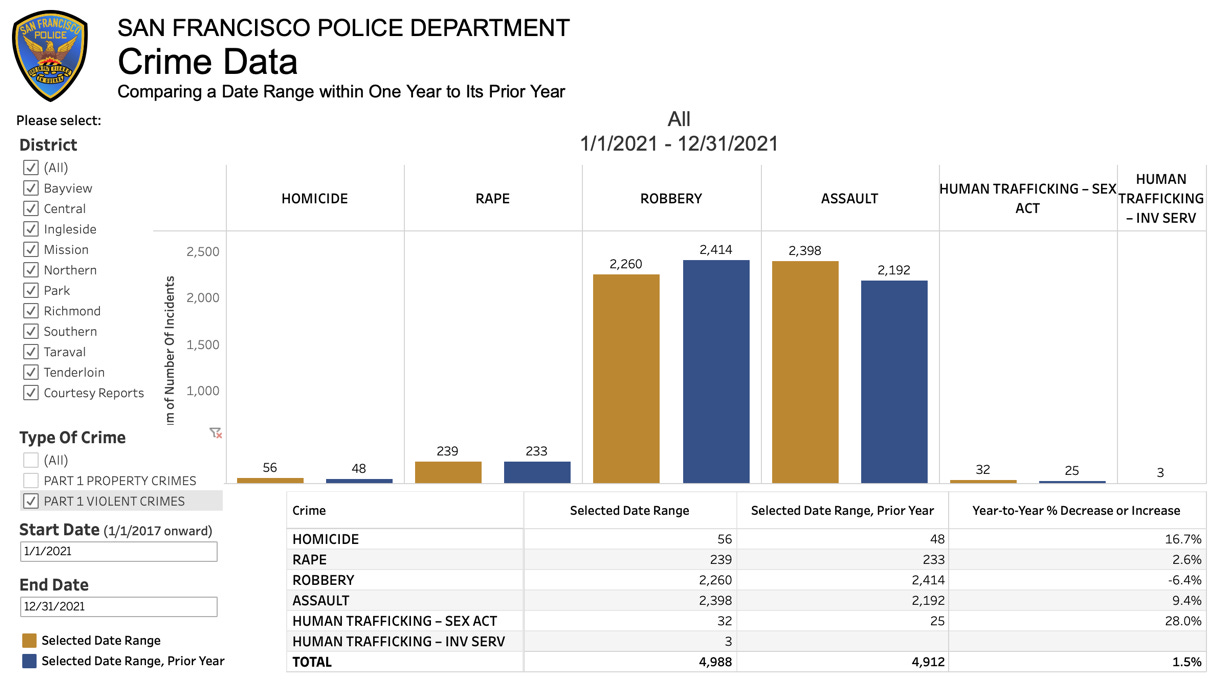
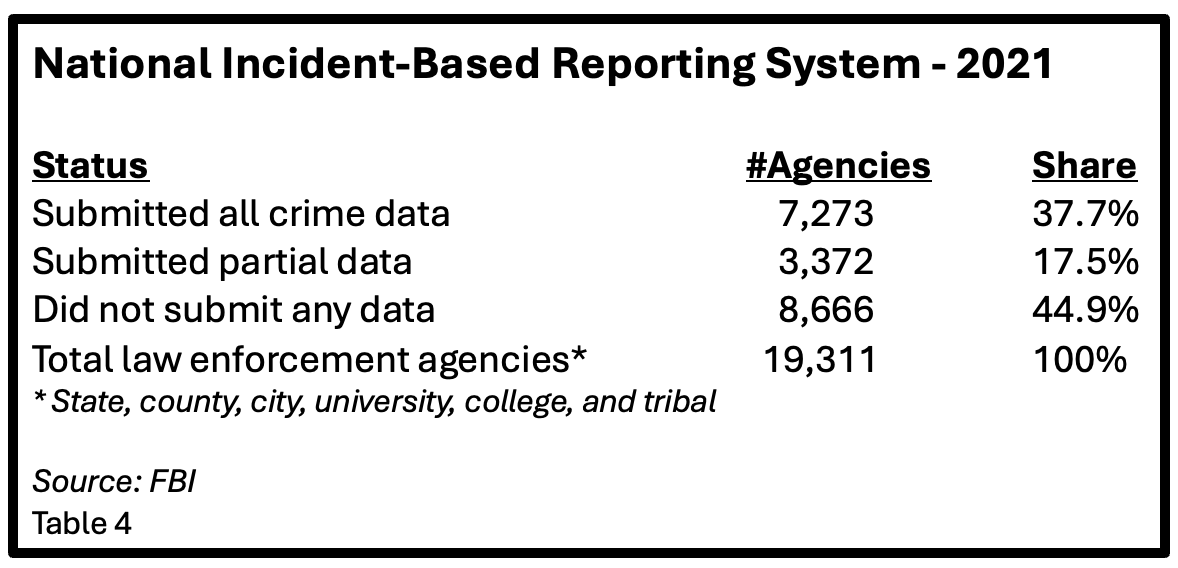
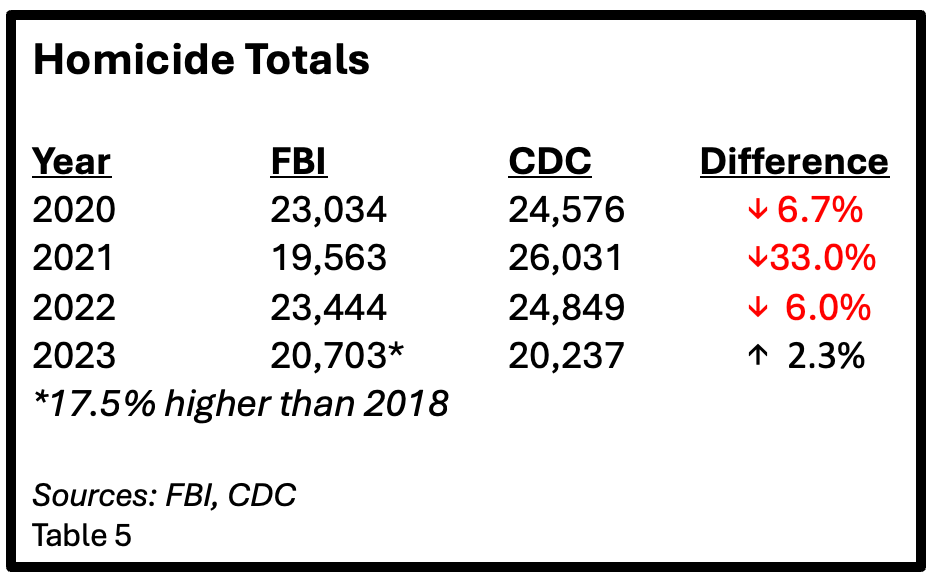
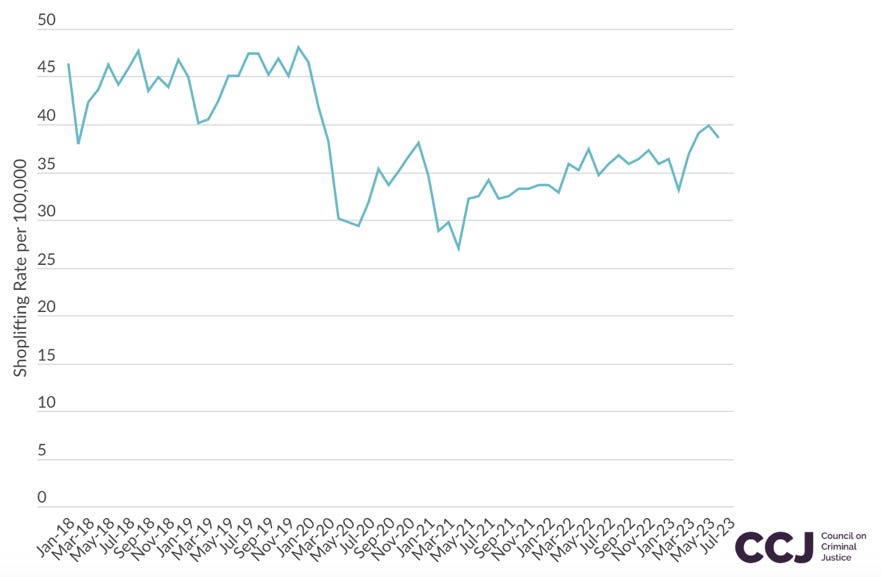

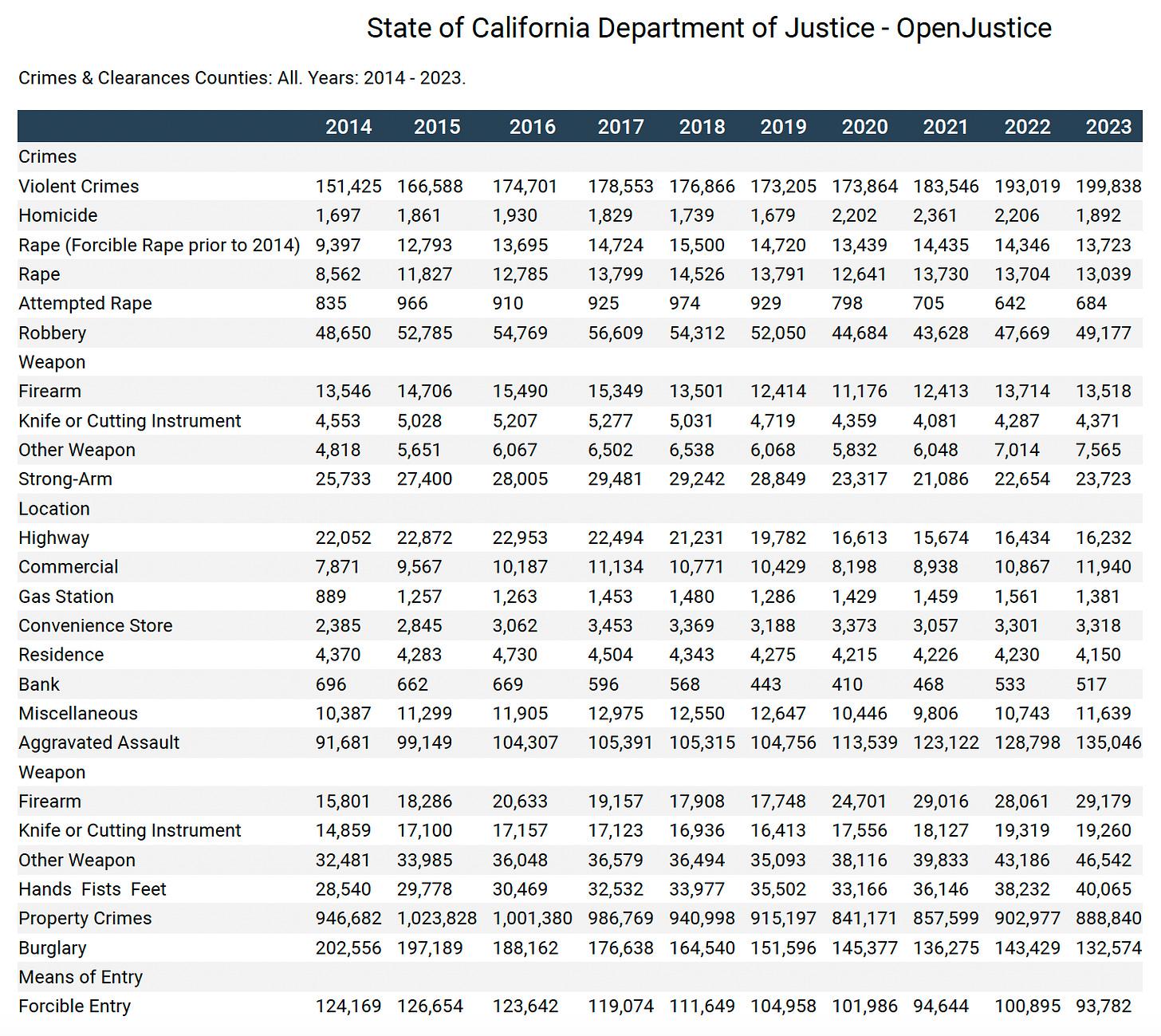
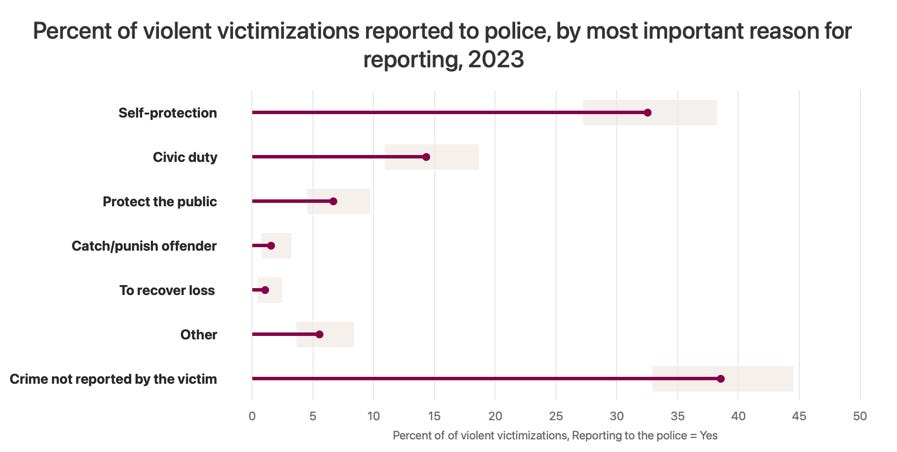

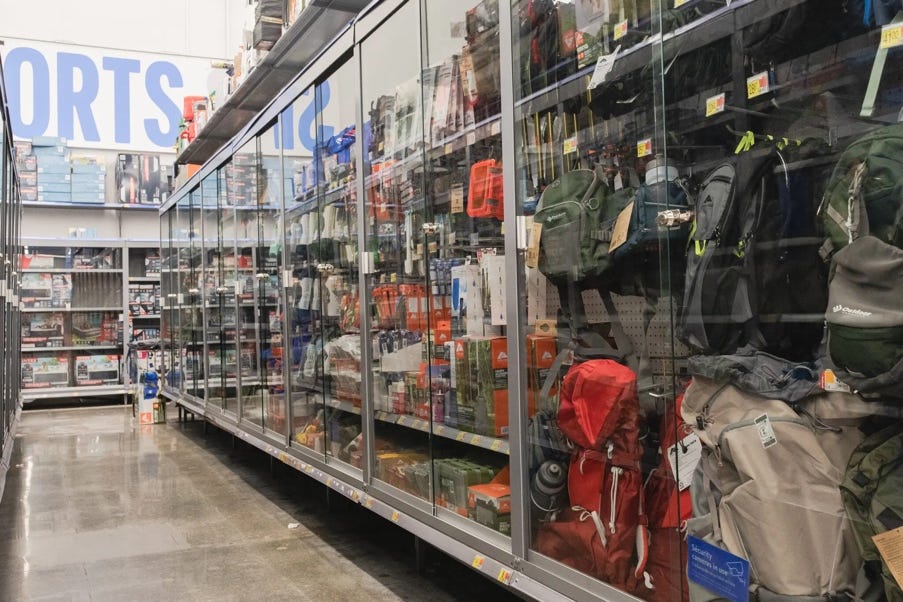
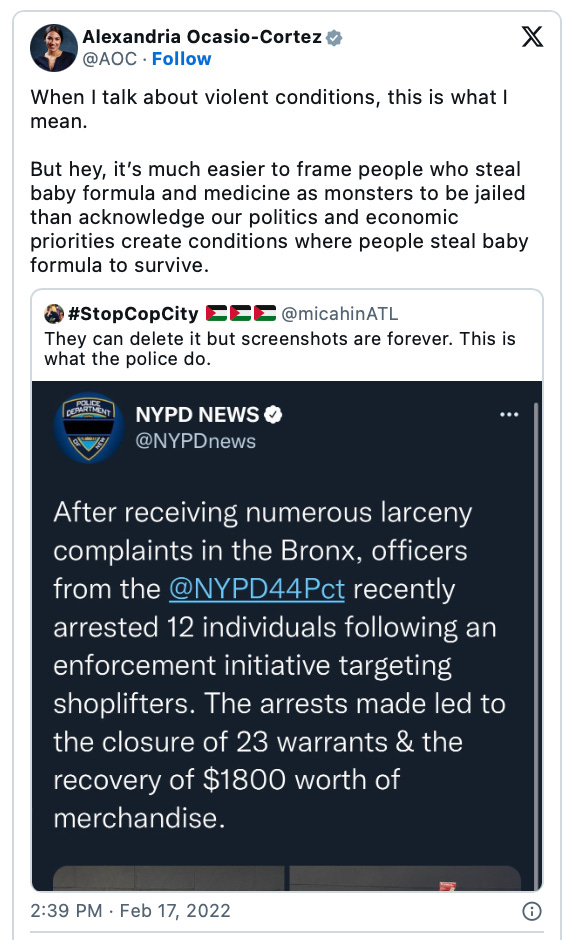
As you pointed out here, the FBI's report, cited by Biden, is not supported by its own data. You further surmise that political motivations account for the variance. I agree. That may be true, and those motivations may be very real.
These are sobering times. We have a candidate who is openly hostile toward the FBI and DOJ, and communicating intent to subjugate both organizations to authoritarian control, if elected. Meanwhile the Supreme court has declared that he will enjoy absolute immunity in the conduct of his core functions, and presumed immunity for all official actions. That his motives cannot be questioned by the courts; that every communication with a subordinate (i.e. any person in the executive branch) constitutes an official act; that immunity is presumed for official acts, even if the act is illegal. The Trump agenda includes stopping any and all DOJ and FBI aid and oversight of state and local policing. Let us remind that the DOJ was created by President Grant specifically to protect the lives and rights of citizens which were being trampled upon by state and local law enforcement, in complicity and sometimes cooperation with organized hate groups.
So, we have lies on both sides. One the one hand, I paraphrase, "the election was stolen and J6 never happened, and everything was wonderful when crime was rising in 2016-2020 and Trump was saving the ACA and the economy and always telling the truth and doing nothing wrong". On the other hand "Violent crime is historically down under Biden".
Good catch, Mark! I concur with your accusation that the claim is not supported by the data to the extent it's altogether misleading.
Your point about lazy media, including fact checkers, is apt. Your review of how the data is collected was also very helpful to anyone seriously wanting to understand it, and the underlying trends it aims/purports to measure. Thank you.
I noticed while in there browsing that data is that violent crime shot up gangbusters during the period from '88 to '92. I welcome your insights on that.
Regarding the narrative, your observations about general crime, e.g., shoplifting and property crimes, were insightful and interesting, but somewhat off topic with respect to violent crime. That's all fine, and maybe I've missed some aspect of its relevance, but it seems the property crimes were conflated with the violent crimes later in the narrative. More importantly, I got the sense the narrative is biased to the point of misleading as to root causes. For instance, you cited the "[violent] BLM protests in Portland", but did not mention the violence entailed confrontation between the protesters and Trump-supporting gun activist counter protesters, wherein 1 person was killed by a Trump supporter. Also not mentioned were the Unite-the-Right protests in Charlottetown, where 1 person was run over and killed by a Trump supporter, or the tourist visit in Washington DC, where 140 law enforcement officers were assaulted by Trump supporters, or the many death threats and kidnapping attempts by Trump supporters around the country. Also not mentioned were the over 4,000 mass shootings that have occurred since 2014. How can that not be germane? And why are we even talking about AOC and the Steele Dossier. It would have been nice if the summary were more balanced.
If you look at the graph of "All violent crime", its shows, as you acknowledge in your article a clear and steady downward trend from 1992 to 2014 (on 2-year intervals), followed by a steady uptick throughout the Trump years, a sharp dip during the pandemic after which it snapped back to where it was. As you pointed out, it has been increasing again. Fortunately, the latest data shows violent crime down for 2024. This data supports an argument that Trump's leadership was toxic.
We all need to decide if we're interested in understanding and remediating the problem, or just assigning blame.
I've read COP Bill Bratton's book, "The Profession", and am currently reading a book "Ours Was the Shining Future" by David Leonhardt, which is kind of a perspective on 20th century political history, highly astute, and by no means one-sided. This exchange finds me in the middle of the chapter on "The Problem with Crime". It's complicated and defies pat explanations. As an aside, the dissection of left/right, and who's in which group and why and how that's evolved over time, has been fascinating and illuminating. I recommend the book.
Thanks again for writing this article. I applaud your calling out the gaffe-master's gaffe -- or lie. I'll call a spade a spade.